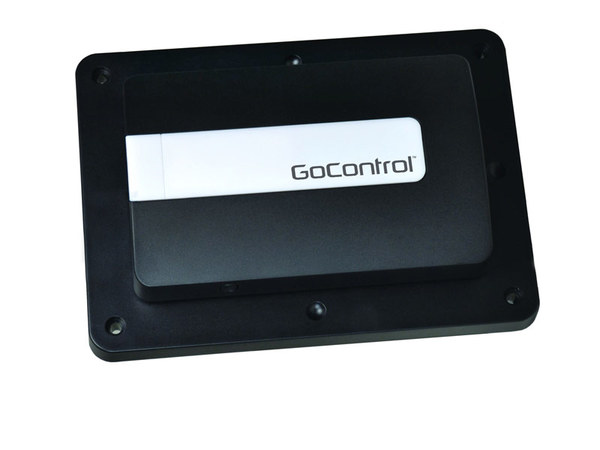GoControl GD00Z-8-GC Smart Garage Door Controller Now Available!
Posted By Michael GorisJust last month, we announced that we were offering the Linear GD00Z-7 Z-Wave Plus Garage Door Controller. Well that product was short-lived, as it has already been discontinued and replaced by the GoControl GD00Z-8-GC Z-Wave Plus Garage Door Controller, which is now available on our site.
 The GoControl and Linear brands are often used interchangeably. They are both used to identify automation offerings from Nortek Control, which is also the parent company of 2GIG. Whether the company decides to brand a product as GoControl or Linear usually isn't very important, as they basically represent the same product lineups from Nortek Control.
The GoControl and Linear brands are often used interchangeably. They are both used to identify automation offerings from Nortek Control, which is also the parent company of 2GIG. Whether the company decides to brand a product as GoControl or Linear usually isn't very important, as they basically represent the same product lineups from Nortek Control.
As you may recall, the various smart garage door controllers offered from Nortek through the years have usually been sold under the Linear banner. Some of these products include the Linear GD00Z-4, the Linear GD00Z-5 and, of course, the Linear GD00Z-7 that we mentioned earlier. From what we can tell, the introduction of the GoControl GD00Z-8-GC was only done to rebrand the product as GoControl instead of Linear. We say that because, from what we can tell, the Linear GD00Z-7 and GoControl GD00Z-8-GC are virtually identical, other than the name written across the front.
This isn't a bad thing though, as the Linear GD00Z-7 was an excellent product. All of the same great features return for the GoControl GD00Z-8-GC. It is a Z-Wave Plus garage door controller that is wired to your garage door motor. By pairing the device with your Z-Wave hub, you can open and close your garage door and check its current status remotely. This is done by using a compatible interactive automation platform for the Z-Wave controller, such as Alarm.com. You can also include it with smart scenes for automatic operation.
Just like its predecessors, the GoControl GD00Z-8-GC cannot check the open/close status of the garage door on its own. Instead, it interfaces with a tilt sensor that is installed on top of the garage door. This tilt sensor will relay status to the GD00Z-8-GC so that it knows whether the garage door is opened or closed. This tilt sensor comes included with the product, so you do not need to purchase one separately.
An exception to the above rule is if you wish to have the garage door monitored by your burglar alarm system. The tilt sensor that comes included only conveys the garage door status to the GD00Z-8-GC, not to the alarm panel being used. So, if you want to monitor the state of the garage door as a part of your alarm system, then you will need to purchase a separate, compatible garage door sensor.
Also returning to the GoControl GD00Z-8-GC is the ability to utilize the S2 Security Protocol with Z-Wave Plus controllers that support S2. This security suite offers advanced levels of protection to keep your automation equipment safe. We recently did a great post on the S2 Security Protocol, which you can check out here. Keep in mind that the same compatibility restrictions of the older Linear and GoControl Garage Door Controllers also apply to the GD00Z-8-GC. This means that you cannot interface the unit with the Honeywell Lyric or the Honeywell LYNX Touch Panels. Make sure to check compatibility before purchasing.
If you want to check compatibility, or if you have any other questions about the GoControl GD00Z-8-GC2 or monitoring service in general, please email us at support@alarmgrid.com. We will check your email at our earliest convenience and reply back as soon as possible. Remember that our business hours for checking email run from 9am to 8pm ET M-F. We look forward to hearing from you!





